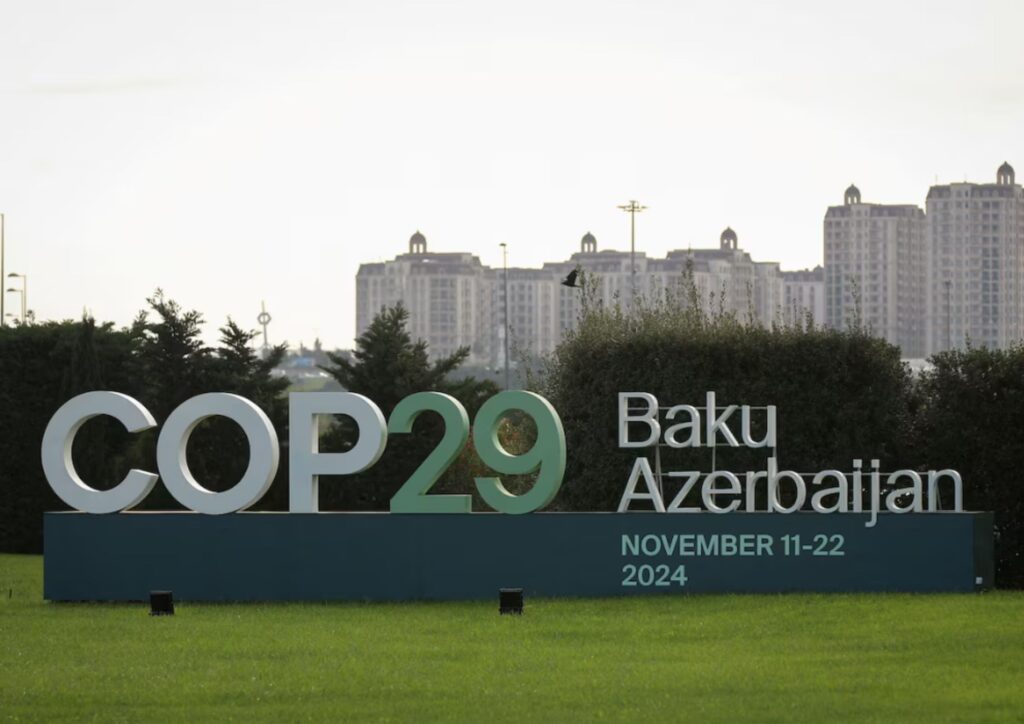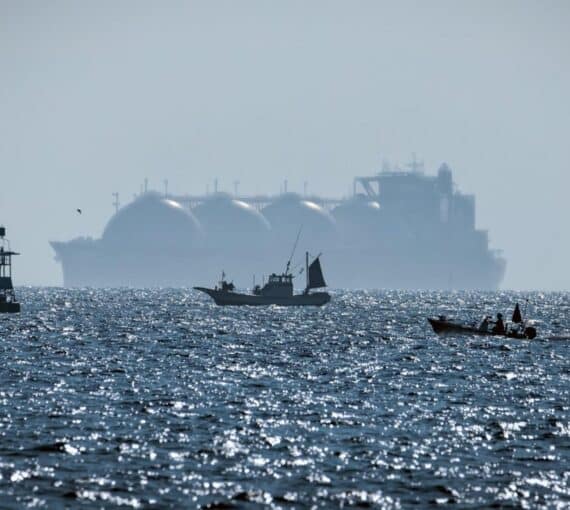
For the last two years, Canada has shown up at the annual United Nations climate conference, with a good story to tell about its progress on tackling the harmful methane emissions that come from its oil and gas production. But this year, the federal government appears to have paused just shy of the finish line, and is at risk of letting a solid win slip away. (Photo: Aziz Karimov via Reuters)
For the last two years, Canada has shown up at the annual United Nations climate conference, with a very good story to tell about its progress on tackling the harmful methane emissions that come from its oil and gas production. But this year, the federal government appears to have paused just shy of the finish line, and is at risk of letting a solid win slip away.
In 2022, Environment Minister Steven Guilbeault took to the stage with U.S. climate envoy John Kerry to announce the two countries’ close collaboration on methane abatement. In 2023, Canada followed up with the first draft of its updated federal methane regulations – which included commendably strong provisions to achieve a world-leading 75 per cent reduction of oil and gas methane by 2030 (from 2012 levels). This again put Canada on a platform with the U.S. and the European Union, both of which announced new regulations last year.
This time around, at COP29 in Baku, Azerbaijan, we were hoping to see Canada’s commitment driven home with the final published version of those regulations. But so far, they seem to be held up somewhere in Ottawa’s regulatory machinery. (Last week’s announcement to cap all emissions from Canada’s oil and gas sector is a separate – though complementary – matter.)
Industry, governments and the public agree on reducing methane emissions. Consensus exists partly because proven, cost-effective solutions are available. They involve common-sense measures such as limiting the wasteful practice of venting or burning excess natural gas, and finding and fixing leaks.
Because it has a short lifespan in the atmosphere, if we stopped emitting methane, we would slow the pace of global warming and temper the effects of climate change within decades.
Tackling methane also represents a potential near-term tactical win against rising global temperatures. Because it has a short lifespan in the atmosphere, if we stopped emitting methane, we would slow the pace of global warming and temper the effects of climate change within decades. (Whereas carbon dioxide’s global warming impact is felt over a much longer time frame.) This buys us time to deal with some of the other more protracted issues that we’ll also have to overcome in our pursuit of a net-zero future.
In recognition of the urgency and practicality of tackling oil and gas methane, 158 nations have joined the Global Methane Pledge to reduce global methane emissions by 30 per cent by 2030 (from 2020 levels). Canada joined in 2021. Meanwhile, the industry-led Oil and Gas Climate Initiative has pledged to bring methane emissions from its member companies (such as Shell, BP and ExxonMobil) as close to zero as possible by 2030.
But promises can easily end up as empty rhetoric unless backed up with regulations. Human-caused methane emissions are still rising globally. Measurement studies, such as those performed by Environmental Defense Fund’s (EDF) MethaneAIR program, show that methane emissions from oil and gas production are significantly underestimated – a reminder that using technologies to help us understand the true scale of the problem is a key step in properly tackling it.
As EDF, the United Nations Environment Programme and the International Energy Agency have argued, there should be mechanisms to ensure governments are accountable to their methane
pledges. There should also be dedicated and sustained financial assistance to ensure developing nations have adequate resources to deliver on their pledge commitments.As EDF, the United Nations Environment Programme and the International Energy Agency have argued, there should be mechanisms to ensure governments are accountable to their methane pledges. There should also be dedicated and sustained financial assistance to ensure developing nations have adequate resources to deliver on their pledge commitments.
Nations such as Canada can lead by example. The federal government has been busy over the last twelve months consulting with industry and other stakeholders on the final version of its regulations. This is, of course, very prudent. But given the feasibility of reducing methane at very low cost to oil and gas companies (with what ought to therefore be zero impact on household budgets) it’s also important that the federal government does not allow momentum on this regulation – and its global leadership on this issue – to be lost.
Likewise, Canada’s oil and gas producing provinces should begin strengthening their own regulations in line with Canada’s 75-per-cent reduction goal (just as B.C. has already done). That way, once new federal rules do arrive, industry should experience the least disruption possible. In Alberta, for example, strengthened regulations would complement recently announced provincial funding for further methane innovation, in effect creating a market – and associated job creation – for some of those new technologies.
Oil and gas methane emissions are a problem for which continued progress is not only necessary but practically and politically possible, because solutions exist and action is widely supported. The finish line is within view for strengthened regulations that will secure Canada’s leadership in the Global Methane Pledge.
This article was originally published in The Globe and Mail.
RELATED PROJECTS
Always grounded in sound evidence, the David Suzuki Foundation empowers people to take action in their communities on the environmental challenges we collectively face.




